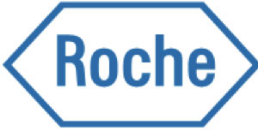A Guide to DEA Regulations for Controlled Substances
Controlled substances are chemicals, drugs and substances that have the potential to be harmful. Around the world, organisations and regulatory bodies have developed controlled substance lists to ensure these substances are regulated and people are prosecuted for misusing them. The DEA plays a vital role in regulating controlled substances, and in this blog post, we will outline why.
Who is the DEA?
The DEA is the drug enforcement administration (DEA), a federal organisation in charge of enforcing the laws regarding controlled substances in the United States. In order to keep people protected from dangerous drugs, the DEA is made up of special agents, diversion investigators, forensic scientists, and many other highly trained professionals.
What are the main DEA Regulations in Place for Controlled Substances?
Drugs and other chemicals that could be addictive are known as controlled substances, and the DEA regulates all processes that involve them including research, storage, supply, manufacturing and distribution. Although there are some international agreements, such as the INCB (International Narcotics Control Board) on which drugs and chemicals are considered controlled substances, individual states and countries make their own laws on which substances are controlled, which go far beyond this international minimum. This leads to a situation where what is considered controlled varies greatly between countries.
The controlled substances act (CSA) is a United States policy established in 1970 to ensure organisations comply with controlled substances regulations. As part of the CSA, the DEA created five categories, or schedules, for controlled substances based on how they are used in medicine and their potential to be habit-forming.
These schedules go beyond simply naming substances, and include definitions of controlled chemical space, as well as derivatives and analogues of the named controlled substances - a simple graphical example of this can be found here.
This can cause confusion or make it difficult to check if individual chemicals are on the CSA and are controlled substances, especially when checks are carried out manually. Nevertheless, when using, handling, importing or exporting possible controlled substances, those involved must be aware of the laws in the relevant countries, which for the USA is the CSA
The 5 Schedules of Controlled Substances
Five categories have been created to classify drugs and substances used to make drugs. They are grouped according to how the drug is used in medicine and its abuse or dependency potential. Simply put, Schedule V drugs have the least abuse potential, and Schedule I have the highest abuse potential1.
In addition common chemicals that can be used as precursors or in the synthesis of controlled substances are also controlled as List 1 or list chemicals.
Schedule I
Drugs, substances, or chemicals in Schedule I do not have an accepted medical use and are considered to have a high potential for abuse. These include drugs like heroin and marijuana.
Schedule II
Schedule II includes those with high abuse potentials, such as cocaine, methamphetamine, Ritalin, and many others. Schedule II drugs typically result in serious psychological or physical dependence and are considered dangerous.
Schedule III
Chemicals, drugs, and substances in Schedule III have a moderate to low potential for dependence and lower abuse potential than Schedules I and II. Some of the Schedule III drugs include anabolic steroids and ketamine.
Schedule IV
Any chemicals, drugs, and substances in Schedule IV have a low potential for abuse and a lower chance of dependence. They inline Tramadol, Valium, and Xanax.
Schedule V
Schedule V chemicals, drugs, and substances have the lowest level of abuse potential and are commonly used for antidiarrheal, antitussive, and analgesic purposes.
In addition common chemicals that can be used as precursors or in the synthesis of controlled substances are also controlled.
List 1 Chemicals
Listed Precursor chemicals, that are used in manufacturing a controlled substance and are critical to the creation of the controlled substance
List 2 chemicals
Listed essential chemicals. Chemicals that are used as solvents, reagents, or catalysts in manufacturing a controlled substance. This can include chemicals such as Acetone, Hydrochloric acid and Ethyl ether, if used on bulk (sometimes this still mean gram scale) a DEA license is required.
Scitegrity and Controlled Substances Support
If you are working with chemicals, drugs, or substances that could be regulated or controlled, Scitegrity has developed an ideal solution to ensure you have all the necessary information about a chemical. Controlled Substances Squared is a software system that can screen individual or large chemical collections against controlled substance lists from over 28 countries. It is an easy-to-use, comprehensive system that can identify controlled drugs, chemical weapons, and precursors and export controlled drugs.
Contact us today for more information on working with controlled substances or our software, Controlled Substances Squared.
Trusted by our Clients











